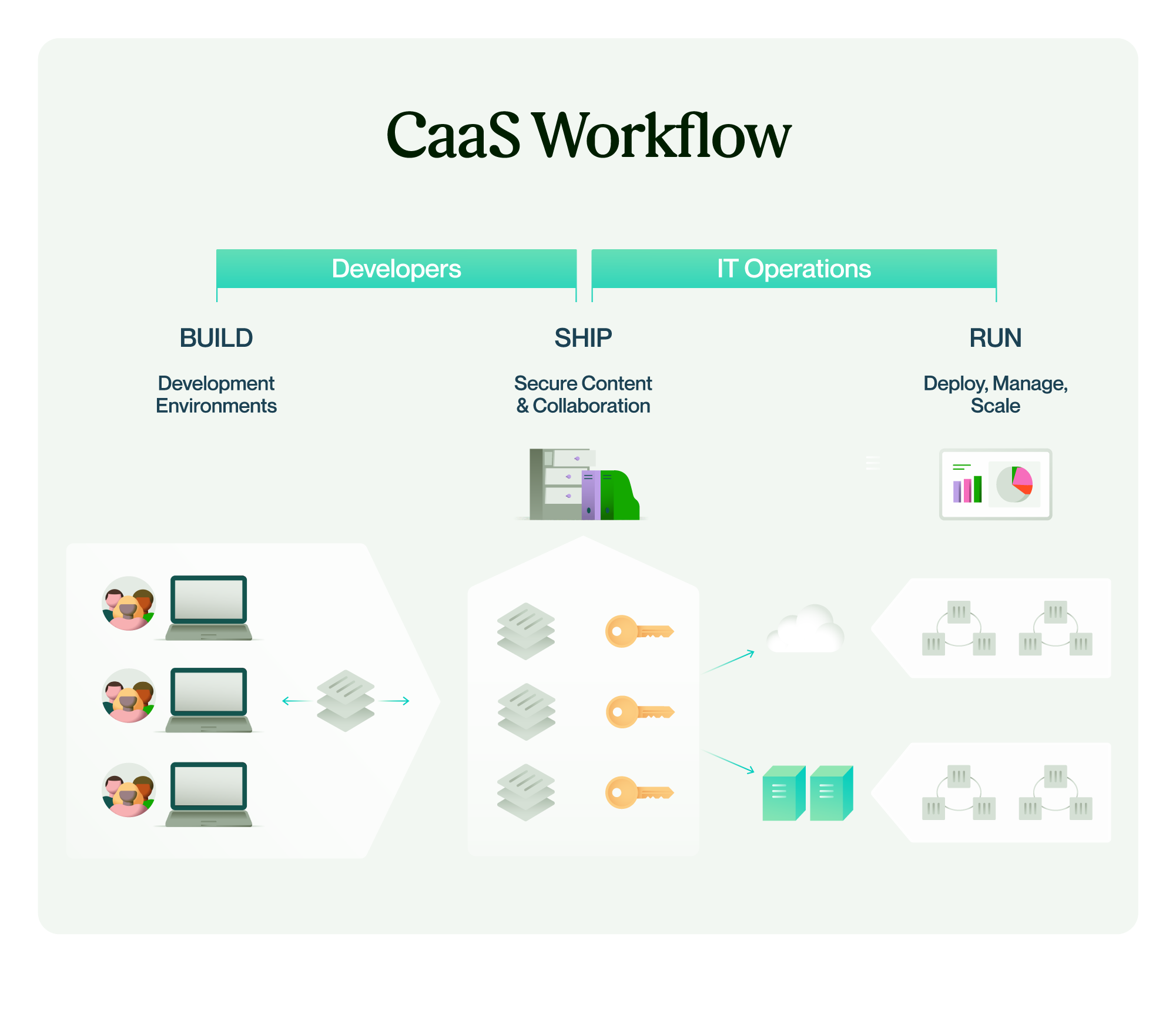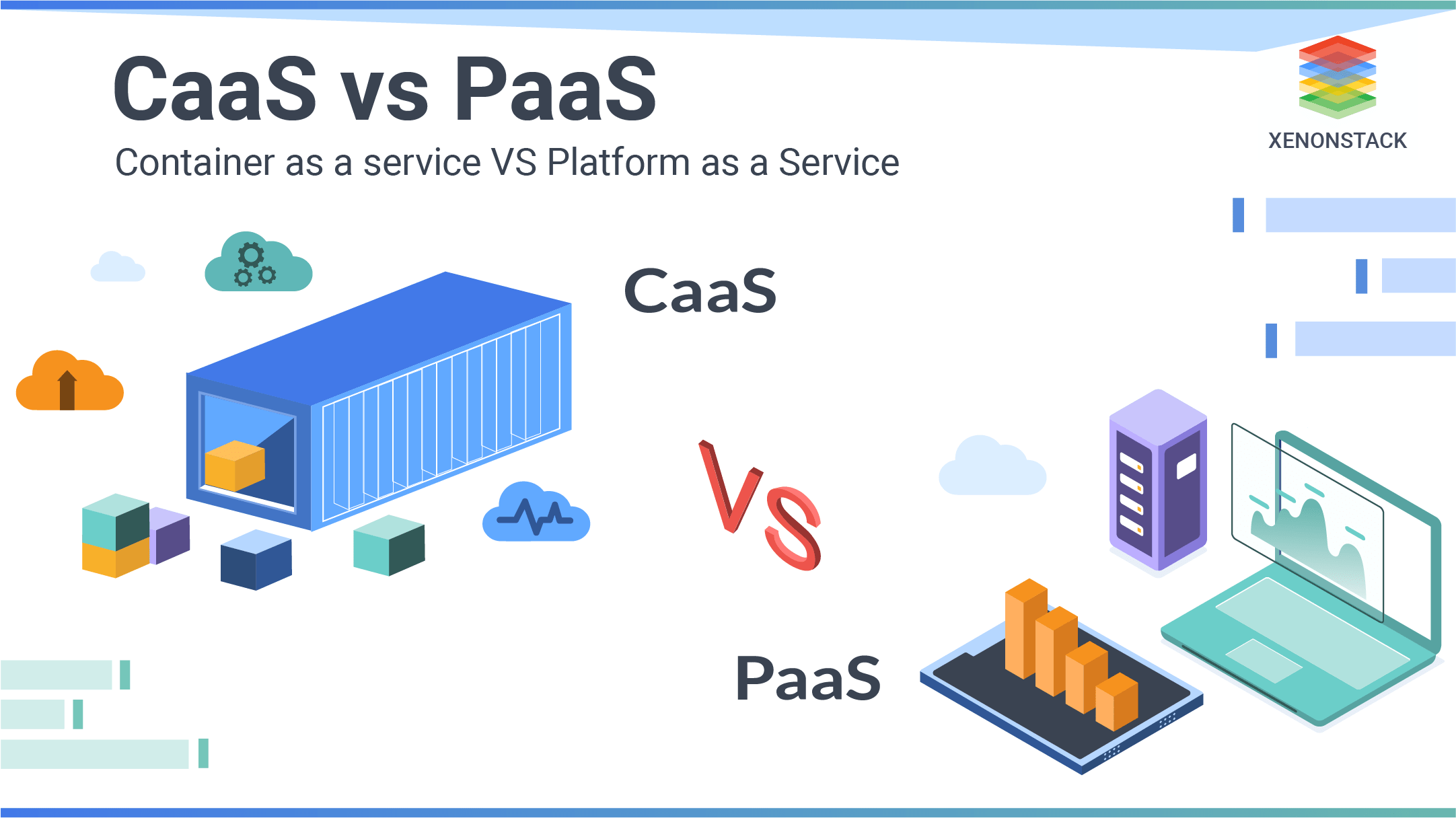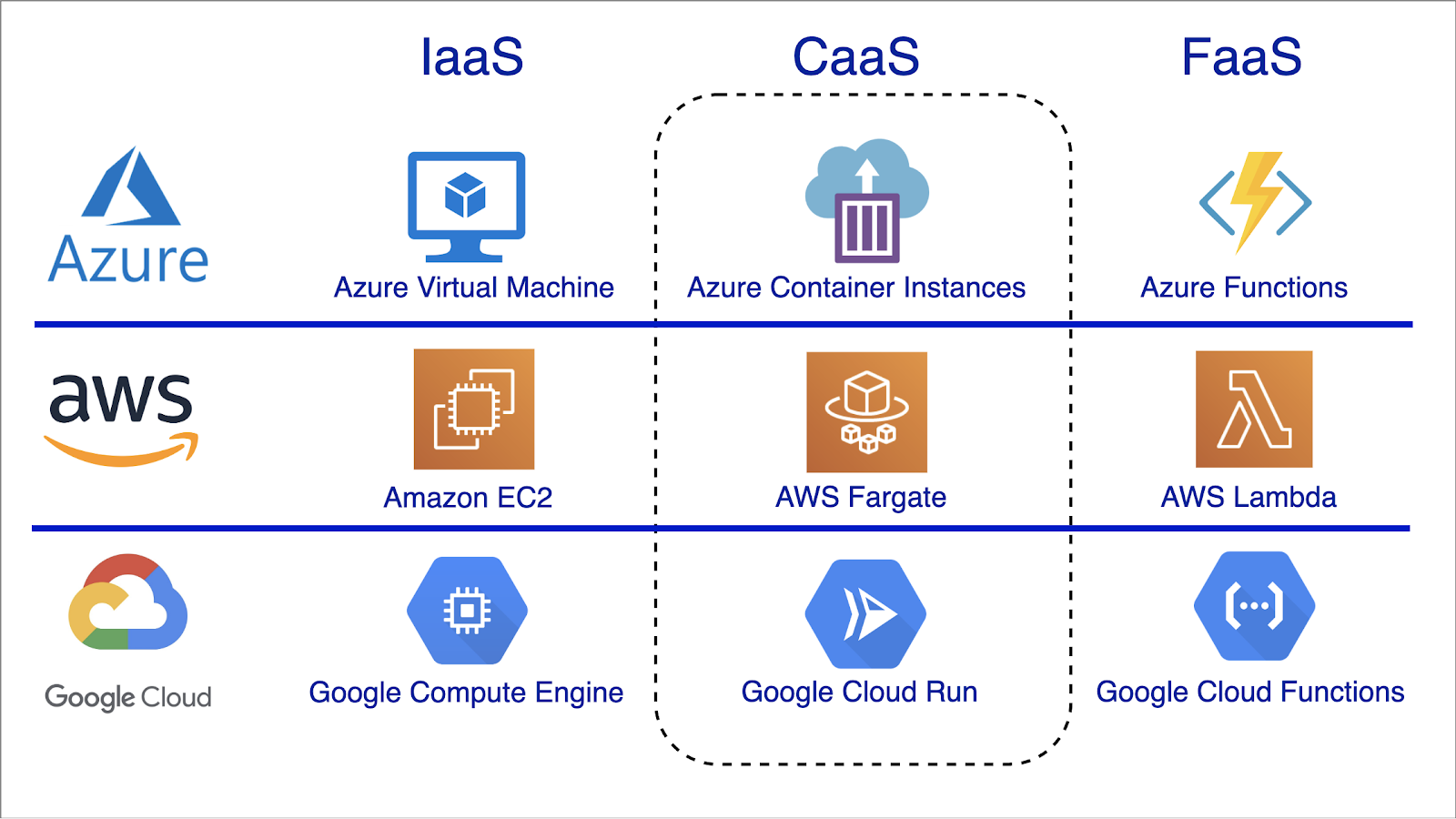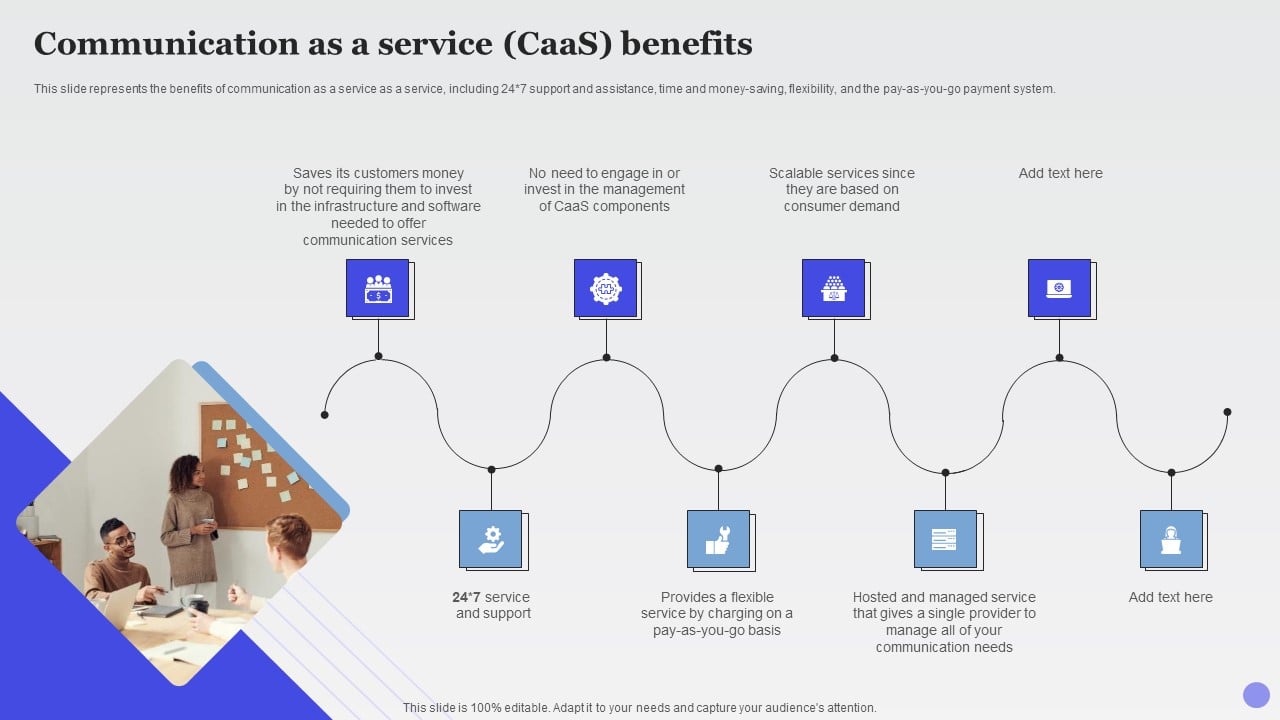
In the ever-evolving landscape of cloud computing, one term that's been making waves is CaaS. What is CaaS in Cloud Computing?CaaS stands for Containers as a Service. Imagine a world where your applications run consistently across different environments, effortlessly adapting to fluctuating demands. That's precisely what CaaS offers! So, if you're curious about harnessing the power of containers in the cloud and want to know how CaaS can elevate your cloud computing game, you've come to the right place.
CaaS isn't just another tech buzzword, it's a game-changer for businesses looking to streamline their cloud operations. Whether you're a seasoned IT professional or someone new to the world of cloud computing, understanding CaaS is essential in today's digital landscape. With containers providing a lightweight, scalable, and efficient way to package and run applications, CaaS takes this concept to new heights. It offers a simplified, hassle-free approach to deploying and managing containers, making it easier for you to focus on what really matters, is your applications.
What Is CaaS?
Containers as a Service (CaaS) is a cloud service that allows developers and IT teams to deploy, manage, and scale containerized applications. CaaS provides a managed environment for running containers, including the underlying infrastructure, orchestration platform, and networking. This can free up developers to focus on building and deploying applications, without having to worry about the underlying infrastructure.
CaaS is typically used to deploy microservices-based applications. Microservices are small, independent services that can be scaled and deployed independently of each other. This makes them ideal for cloud computing environments, where resources can be scaled up or down as needed.
CaaS platforms offer a set of tools and services for creating, orchestrating, and scaling containerized applications. These platforms simplify the management of containers, allowing developers to focus on writing code and delivering software rather than dealing with the intricacies of infrastructure.
Key components of CaaS include container orchestration, auto-scaling, load balancing, and other features that help ensure high availabilityand efficient resource utilization. Popular CaaS platforms include Kubernetes, Docker Swarm, and Amazon Elastic Container Service (ECS), among others.
CaaS is particularly valuable for organizations looking to build, deploy, and manage applications in a more agile and efficient manner. It enables the seamless scaling of applications, promotes consistency in deployment, and simplifies the management of containers, making it a vital component of modern cloud computing architectures.
Some popular CaaS offerings include:
- Amazon Elastic Container Service (ECS)
- Azure Kubernetes Service (AKS)
- Google Kubernetes Engine (GKE)
- Red Hat OpenShift
How Does CaaS Compare To PaaS?
CaaS and PaaS are both cloud computingservices that provide a platform for developing, deploying, and managing applications. However, there are some key differences between the two services.
CaaS is specifically focused on running containerized applications. Containers are lightweight and portable software packages that can be isolated from each other, which makes them ideal for cloud computing environments. CaaS provides a managed environment for running containers, including the underlying infrastructure, orchestration platform, and networking.
PaaS, on the other hand, is a more general-purpose platform for developing and deploying applications. PaaS providers offer a variety of services, including databases, web servers, and programming languages. PaaS can be used to deploy both containerized and non-containerized applications.
Which service is right for you will depend on your specific needs. If you are developing and deploying containerized applications, then CaaS is a good option. If you are developing and deploying non-containerized applications, or if you need a more general-purpose platform, then PaaS is a good option.
Here are some examples of when you might choose CaaS vs. PaaS:
- You are developing and deploying non-containerized applications.
- You need a platform that is easy to set up and manage.
- You need a platform that offers a wide range of services, such as databases, web servers, and programming languages.
- You are developing and deploying non-containerized applications.
- You need a platform that is easy to set up and manage.
- You need a platform that offers a wide range of services, such as databases, web servers, and programming languages.
Here is a table that summarizes the key differences between CaaS and PaaS:
| CaaS | PaaS |
| Focus - Containerized applications | Focus - All types of Applications |
| Services provided - Infrastructure, orchestration, networking | Services provided - Databases, web servers, programming languages, etc. |
| Control - Developers have more control over the underlying infrastructure | Control - Developers have less control over the underlying infrastructure |
| Complexity - More complex to set up and manage | Complexity - Less complex to set up and manage |
CaaS
- You are developing and deploying microservices-based applications.
- You need a platform that can support a wide variety of containerized applications.
- You need more control over the underlying infrastructure
PaaS
- You are developing and deploying non-containerized applications.
- You need a platform that is easy to set up and manage.
- You need a platform that offers a wide range of services, such as databases, web servers, and programming languages.
When choosing cloud services, it is important to consider your specific needs and requirements. Factors to consider include the type of applications you need to deploy, the amount of resources you need, and your budget. You should also consider the features and services offered by different cloud providers.
What Are The Other Cloud Services Available?
There are several types of cloud services available in the world of cloud computing, each serving specific purposes and catering to different needs. Here are some of the main categories of cloud services:
1. Infrastructure as a Service (IaaS) - IaaS provides virtualized computing resources over the internet. Users can rent virtual machines, storage, and networking resources, giving them the flexibility to create and manage their own virtualized environments. Examples include Amazon Web Services (AWS), Microsoft Azure, and Google Cloud Platform (GCP).
2. Platform as a Service (PaaS) -PaaS offers a platform that includes both infrastructure and development tools for building, testing, and deploying applications. Users can focus on application development while the PaaS provider manages the underlying infrastructure. Examples include Heroku, Google App Engine, and Microsoft Azure App Service.
3. Software as a Service (SaaS) -SaaS delivers software applications over the internet on a subscription basis. Users can access these applications through web browsers without the need for installation or maintenance. Common examples include Microsoft 365 (formerly Office 365), Salesforce, and Google Workspace.
4. Function as a Service (FaaS) -FaaS, also known as serverless computing, allows developers to run individual functions or microservices in response to specific events. The cloud provider automatically manages the infrastructure and scales resources as needed. Examples include AWS Lambda and Azure Functions.
5. Database as a Service (DBaaS) - DBaaS provides database management and hosting services. Users can deploy and manage databases without the need to handle hardware or database maintenance tasks. Examples include Amazon RDS, Azure SQL Database, and Google Cloud SQL.
6. Containers as a Service (CaaS) - CaaS offers a platform for managing and deploying containerized applications using tools like Docker and Kubernetes. It simplifies container orchestration and scaling in the cloud.
7. Storage as a Service -This category includes cloud-based storage solutions for data storage and backup. Examples include Amazon S3, Google Cloud Storage, and Azure Blob Storage.
8. Analytics as a Service (AaaS) - AaaS provides cloud-based tools and services for data analytics and processing. Users can analyze and gain insights from large datasets without the need for on-premises hardware. Examples include Google BigQuery and AWS Athena.
9. AI and Machine Learning as a Service (AI/MLaaS) -Cloud providers offer AI and machine learning platforms and services that enable businesses to build and deploy machine learning models without deep expertise in the field. Examples include AWS SageMaker and Google AI Platform.
10. Security as a Service (SECaaS) -SECaaS provides security services to protect data and infrastructure in the cloud. This can include services like firewalls, intrusion detection, and encryption.
These are just a few examples of the many cloud services available. The choice of service depends on an organization's specific requirements, and many organizations use a combination of these services to meet their various needs.
What Are The Benefits Of CaaS?
Containers as a Service (CaaS) offers several benefits that make it a popular choice for businesses and developers in the world of cloud computing. Some of the key advantages of CaaS include:
- Portability -Containers are highly portable, allowing you to package applications and their dependencies into a single container image. This image can run consistently across various cloud environments, on-premises servers, and developer workstations, making it easy to move applications between different platforms.
- Scalability - CaaS platforms, often integrated with container orchestration tools like Kubernetes, enable automatic scaling of applications. As demand fluctuates, containers can be dynamically spun up or down to meet workload requirements, ensuring efficient resource utilization and high availability.
- Resource Efficiency -Containers are lightweight and share the host operating system's kernel, making them more resource-efficient than traditional virtual machines. This efficiency leads to quicker startup times and the ability to run more containers on the same infrastructure.
- Isolation - Containers provide process and file system isolation, ensuring that applications do not interfere with each other. This isolation enhances security and minimizes conflicts between different applications running on the same host.
- Rapid Deployment -Containers can be created and deployed quickly, reducing the time it takes to deliver and update applications. This agility is particularly valuable for continuous integration and continuous deployment (CI/CD) pipelines.
- Consistency -With containers, you can ensure that the same environment is used in development, testing, and production. This consistency reduces the "it works on my machine" problem and streamlines the software development lifecycle.
- Version Control - Container images are versioned, making it easy to roll back to previous versions if issues arise during deployment. This version control is essential for maintaining application stability and reliability.
- DevOps Enablement -CaaS supports DevOps practices by automating application deployment, scaling, and management. It fosters collaboration between development and operations teams and accelerates the software delivery process.
- Resource Isolation - Containers allow you to specify resource limits and priorities, ensuring that one application's resource consumption doesn't negatively impact others on the same host.
- Cost Savings -Containers reduce infrastructure overhead by optimizing resource utilization and enabling more efficient use of cloud resources. They also eliminate the need for running full virtual machines for each application.
- Ecosystem and Community - The container ecosystem, driven by Docker and Kubernetes, has a vibrant and active community. This means access to a wealth of containerized applications and a robust support network for troubleshooting and best practices.
- Microservices Architecture -CaaS supports the microservices architectural pattern, which promotes modular, decoupled application components. This approach simplifies application development, testing, and maintenance.
In addition to these benefits, CaaS is also a good choice for businesses that are looking to adopt a cloud-native approach to development and deployment. Cloud-native applications are designed to be run in cloud environments, and CaaS provides a platform that is specifically designed for running cloud-native applications.
FAQ's About What Is Caas In Cloud Computing?
What Is The Function Of CaaS?
CaaS is a form of container-based virtualization where applications and their dependencies are bundled into lightweight, portable containers. CaaS helps development teams deploy and manage applications more efficiently while offering more control of container orchestration than is allowed by PaaS.
What Is CaaS As A Service Example?
Container as a Service (CaaS) is a cloud service that manages containers at large scale, including starting, stopping, scaling, and organizing containerized workloads. Examples of CaaS services are Amazon Elastic Container Service (ECS), Amazon Fargate, and Azure Container Instances (ACI).
Who Uses CaaS?
Using CaaS, developers can automate container hosting and deployment, without worrying about managing the underlying infrastructure. CaaS is often independent of the code stack or programming language, which makes containers easier to deploy across a multi-cloud environment.
What Is The Disadvantage Of CaaS?
Data Security Risks: CaaS providers may store sensitive data in their cloud environment, which can be vulnerable to security risks such as data breaches or cyber attacks.
Conclusion
In conclusion, Containers as a Service (CaaS) has emerged as a pivotal element in the realm of cloud computing. It offers a solution that simplifies the deployment and management of containers, ultimately enhancing the efficiency and flexibility of your cloud-based applications. As businesses strive to stay agile and adapt to ever-changing technology landscapes, CaaS stands out as a powerful tool to meet these demands. It empowers organizations to scale their applications seamlessly, maintain consistency across various cloud environments.
With this comprehensive guide, we hope to have shed light on the concept of CaaS, demystifying its key aspects and showcasing its relevance in the fast-paced world of cloud technology. Whether you're an IT professional, a developer, or a decision-maker within your organization, understanding CaaS is a step toward harnessing the full potential of cloud computing. As you embark on your journey to explore and adopt CaaS, remember that its true power lies in its ability to simplify complex processes, improve resource utilization.


